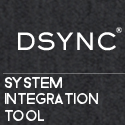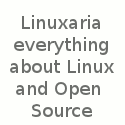For my entire 15 year tenure as an Information Technology professional, I have always relied on and used almost nothing except for Microsoft products. Over the years I have held many Microsoft certifications, been to numerous Microsoft seminars, and have trusted in the products provided by Microsoft.
While I still do implement many Microsoft technologies in the workplace, there are several other places that I look for solutions to the needs of our business. You see, we are a live, on demand television and movie provider that streams hundreds of channels to your television, smart phone, tablet, or laptop computer all via the internet. Video on a bubble.
While the employees at our company have different roles and responsibilities, it often sends me out of the Microsoft realm and into the realm of open source solutions. I was always hesitant to implement anything that was considered open source into production. Again, don’t you get what you pay for in this industry? If so, then why would I implement software and solutions that are completely free? At first, this seemed like a horrible idea, but then, the proverbial light bulb came on.
The developers of these open source applications are just like me. They found that if they take a beginning concept of some piece of software that is already in production, and collaborate with other industry professionals, that collectively they could develop something similar to that product. Not only have they developed products that are similar, they have developed products that are better and free.
I would like to share with you a few of the open source technologies that I have used, implemented, and become a big fan of. There are many options out there for different open source solutions. When planning out your next big IT project, keep your mind open, and see if any of these solutions can help you out.
CentOS
CentOS is a free operating system distribution based upon the Linux kernel. It is derived entirely from the Red Hat Linux distribution. In mid-2010, CentOS became the most popular Linux distribution for web servers, with approximately %30 of all Linux-based web servers using it. So, the next time you are looking to roll out a web server, look to CentOS!
Zenoss
Zenoss Core is an open-source application, server, and network management platform based on the Zope application server. Zenoss provides an attractive web interface that allows system admins to monitor servers and devices easily and efficiently.
Zenoss has the ability to monitor devices and servers via SSH, SNMP, WMI and basic ping operations to ensure availability. It also keeps an eye on disk space, event logs, and other customizable thresholds for your servers and devices within your network. Implementing Zenoss on a CentOS server will have you well on your way to monitoring all of your network devices in one easy to use interface.
ProxMox VE
ProxMox is an open-source virtualization platform based on KVM and OpenVZ. Proxmox Virtual Environment gives you near-bare-metal performance and leading scalability for your workloads. You can virtualize even the most demanding application workloads.
ProxMox supports linux and windows servers on both 32 and 64 bit platforms. It features support for the latest Intel and AMD server chipsets providing optimum virtual machine performance. With a feature rich, built-in management layer, ProxMox contains all of the capabilities required to create and manage a strong, dependable virtual infrastructure.
KeePass
KeePass is an open-source password manager, which helps you to manage your passwords in a safe and secure manner. Featuring a secure, encrypted database backend, you have easy access to all of your network account passwords using one master password, so you only have to remember one single password or select the key file to unlock the whole database. The databases are encrypted using the best and most secure encryption algorithms currently known (AES and Twofish).
OpenStack
OpenStack is a global collaboration of developers and cloud computing technologists producing the ubiquitous open source cloud computing platform for public and private clouds. The project aims to deliver solutions for all types of clouds by being simple to implement, massively scalable, and feature rich. The technology consists of a series of interrelated projects delivering various components for a cloud infrastructure solution.
VideoLan VLC Player
VLC is a free and open source cross-platform multimedia player and framework that plays most multimedia files as well as DVD, Audio CD, VCD, and various streaming protocols.
These are just a few open source applications that I have implemented into production that has saved me and our company a lot of time, money, resources, and headaches. The next time you are leading an IT project, remember that there are a lot of excellent open source applications available to you at no cost.
Do not make the same mistakes that I did for over 15 years. Don’t be close minded, be open-sourced!
Article Source: http://EzineArticles.com/7512455


Leave a Reply